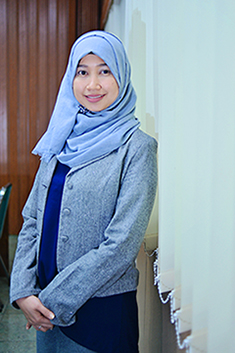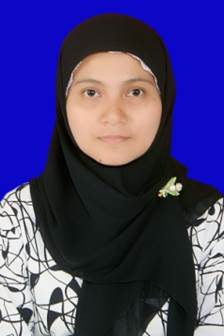Protective Factor Evaluation of Purslane (Portulaca grandiflora) Magenta Flower Variety Herbs Extract Cream Formula
Downloads
Background: Indonesia is an equatorial country that is rich in sunlight all year. UV light is divided into three wavelength groups: UV-A (320-400nm), UV-B (280-320nm), and UV-C (100-290nm). Intracell chromophores in skin cell membranes such as riboflavin, porphyrin, nicotinamide, and enzymes will absorb the UV-A light. The UV-B light penetrates the dermis layer and causes DNA structure changes, which lead to wrinkles and a rising risk of skin cancer. Premature skin aging and skin cancer can be prevented with sunscreen preparation containing compounds that can protect the skin from UV radiation. Flavonoid is one of the purslane (Portulaca grandiflora) active metabolites that have the potency to be developed as sunscreen. Objective: This research aimed to determine the ability of purslane (Portulaca grandiflora) magenta flower variety herbs extract cream as a sunscreen as indicated by the %Te, %Tp, and Sun Protective Factor value. Methods: This research was an experimental study with various purslane magenta flower variety herbs extract cream formulas that were tested for their %Te, %Tp, and SPF value with a UV-Vis spectrophotometer. Results: The sunscreen cream preparation with 2.5% of purslane (Portulaca grandiflora) magenta flower variety herb extract had %Te, %Tp, and SPF values of 25.86 ± 2.41%, 36.05 ± 2.82%, and 3.97 ± 0.35 respectively. At the same time, preparations with 5% concentration of extract had %Te, %Tp, and SPF values of 8.23 ± 0.86%, 16.65 ± 0.92%, and 8.03 ± 0.38, respectively. Conclusion: The sunscreen activity of all extract concentration creams was significantly different compared to the negative control (cream base) in all parameters. Flavonoids are the compounds responsible for the sunscreen activity of purslane extract.
Addor, F. A. S. A., Barcaui, C. B., Gomes, E. E., Lupi, O., Marçon, C. R. & Miot, H. A. (2022). Sunscreen Lotions in the dermatological prescription: review of concepts and controversies. Anais Brasileiros de Dermatologia; 97(2); 204–222. doi: 10.1016/j.abd.2021.05.012
Arisca, H. (2018). Uji Aktivitas Antioksidan Ekstrak Angkak dan Formulasinya dalam Sediaan Krim yang Diuji Daya Penetrasi dan Keamanan pada Kelinci. Skripsi; Universitas Setia Budi Surakarta.
Budiawan, A., Purwanto, A., Puradewa, L., Cahyani, E. D. & Purwaningsih, C. E. (2023). Wound Healing Activity and Flavonoid Contents of Purslane (Portulaca grandiflora) of Various Varieties. RSC Advances; 13; 9871-9877. doi: 10.1039/D3RA00868A.
Buso, P., Radice, M., Baldisserotto, A., Manfredini, S., & Vertuani, S. (2017). Guideline for The Development of Herbal-Based Sunscreen. London: IntechOpen. doi: 10.5772/intechopen.72712.
Cahyani, E. D., Budiawan, A. & Puradewa, L. (2022). Sunscreen Activity of Soursop Seeds Extract. Strada Journal of Pharmacy; 4; 23-26
Chen, L., Hu, J. Y. & Wang, S. Q. (2012). The Role of Antioxidants in Photoprotection: A Critical Review. Journal of the American Academy of Dermatology; 67; 1013–1024. doi: 10.1016/j.jaad.2012.02.009.
Cumpelick, B. (1927). Analytical Procedures and Evaluation of Sunscreens. Journal of the Society of Cosmetics Chemists; 23; 333–345.
El-Saber Batiha, G., Beshbishy, A. M., Ikram, M., Mulla, Z. S., Abd El-Hack, M. E., Taha, A. E., Algammal, A. M. & Ali Elewa, Y. H. (2020). The Pharmacological Activity, Biochemical Properties, and Pharmacokinetics of the Major Natural Polyphenolic Flavonoid: Quercetin. Foods; 9; 1-16. doi: 10.3390/foods9030374.
Ganeshpurkar, A. & Saluja, A. K. (2017). The Pharmacological Potential of Rutin. Saudi Pharmaceutical Journal; 25; 149–164. doi: 10.1016/j.jsps.2016.04.025.
Gragnani, A., Cornick, S. Mac, Chominski, V., Ribeiro de Noronha, S. M., Alves Corríªa de Noronha, S. A. & Ferreira, L. M. (2014). Review of Major Theories of Skin Aging. Advances in Aging Research; 3; 265–284. doi: 10.4236/aar.2014.34036.
Hanani, E. (2017). Analisis Fitokimia. Jakarta: Buku Kedokteran EGC.
Harbone, J. (1987). Metode Fitokimia Edisi Kedua. Padmawinata K. Soediro I. penerjamah. Terjemahan dari Phytochemicall Methods. Bandung: ITB.
He, H., Li, A., Li, S., Tang, J., Li, L., & Xiong, L. (2021). Natural Components in Sunscreens: Topical Formulations with Sun Protection Factor (SPF). Biomedicine and Pharmacotherapy; 134; 1-11. doi: 10.1016/j.biopha.2020.111161.
Husein, S. G., Sundalian, M. & Husna, N. (2021). Review: Component Analysis of Purslanes Chemicals Compound (Portulaca oleraceae L. and Portulaca grandiflora Hook.). Jurnal Sains dan Kesehatan; 3; 317–327.
Julianto, T. S. (2019). Fitokimia: Tinjauan Metabolit Sekunder dan Skrining Fitokimia. Yogyakarta: Universitas Islam Indonesia.
Kasitowati, R., Wahyudi, A., Asmara, R., Aliviyanti, D., Iranawati, F., Panjaitan, M. A. P., Pratiwi, D. C. & Arsad, S. (2021). Identification Photoprotective Activity of Marine Seaweed: Eucheuma sp. International Conference on Biotechnology and Food Sciences; 679; 1–5. doi: 10.1088/1755-1315/679/1/012014.
Limpiangkanan, W. & Limpiangkanan, W. (2010). Special Article: Photo-aging: A Literature Review. Journal of the Medical Association of Thailand; 93; 753–757.
Mansur, J. S., Breder, M. N., Mansur, M. C. & Azulay, R. D. (1986). Determination of Sun Protective Factor by Spectrophotometry. An Bras Dermatol; 61; 121–124.
Matsuda, M., Hoshino, T., Yamakawa, N., Tahara, K., Adachi, H., Sobue, G., Maji, D., Ihn, H. & Mizushima, T. (2013). Suppression of UV-Induced Wrinkle Formation by Induction of HSP70 Expression in Mice. Journal of Investigative Dermatology; 133; 919–928. doi: 10.1038/jid.2012.383.
Mishra, A. K., Mishra, A. & Chattopadhyay, P. (2012). Assessment of In Vitro Sun Protection Factor of Calendula officinalis L. (asteraceae) Essential Oil Formulation. Journal of Young Pharmacists; 4; 17–21. doi: 10.4103/0975-1483.93575.
Saewan, N. & Jimtaisong, A. (2013). Photoprotection of Natural Flavonoids. Journal of Applied Pharmaceutical Science; 3; 129–141. doi: 10.7324/JAPS.2013.3923.
Wang, S. Q, Stanfield, M. S. & Osterwalder, U. (2008). In Vitro Assessment of UV A Protection by Populer Sunscreen Available in the United States. Journal of America Dermatology; 59; 934- 942.
Copyright (c) 2023 JURNAL FARMASI DAN ILMU KEFARMASIAN INDONESIA

This work is licensed under a Creative Commons Attribution-NonCommercial-ShareAlike 4.0 International License.
1. The copyright of this journal belongs to the Editorial Board and Journal Manager with the author's knowledge, while the moral right of the publication belong to the author.
2. The formal legal aspect of journal publication accessibility refers to the Creative Commons Attribution-Non-Commercial-Share Alike (CC BY-NC-SA), which implies that the publication can be used for non-commercial purposes in its original form.
3. Every publication (print/electronic) is open access for educational, research, and library purposes. In addition to the objectives mentioned above, the editorial board is not responsible for copyright infringement


.jpg)















